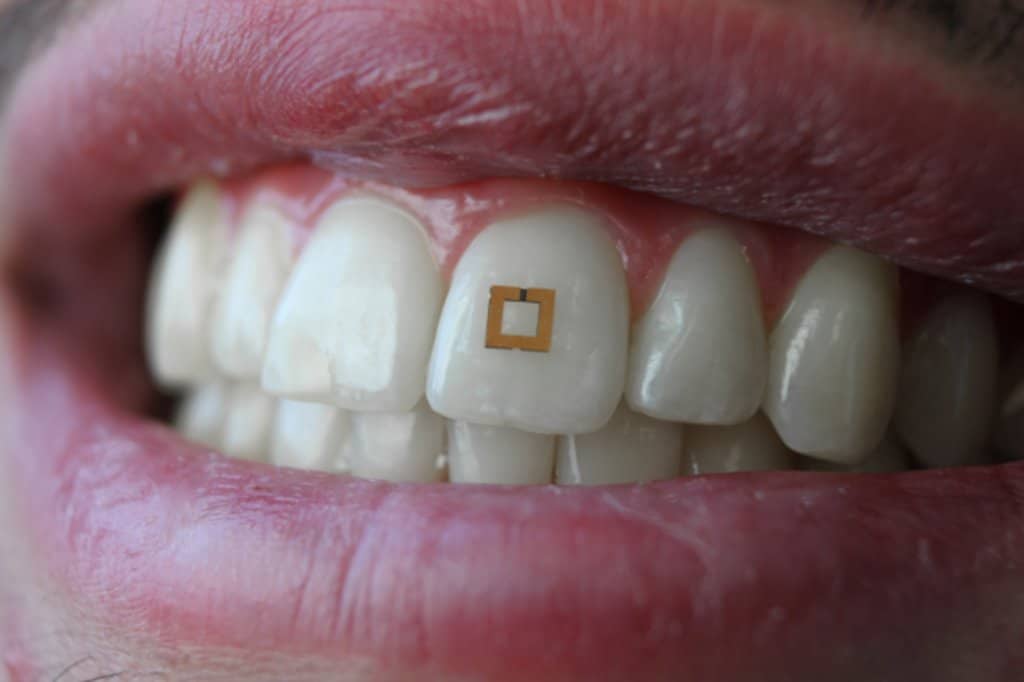These itty bitty sensors will provide real time monitoring of what happens in and around our bodies and may prove to be invaluable in the context of clinical studies or health care. Previous wearable monitors for dietary intake had undesirable limitations such as bulky wiring, requiring use of a mouth guard, or frequent replacement of sensors due to rapid degrading. This development is more adoptable being only 2mm x 2mm which can flexibly conform and bond to irregular tooth surfaces, and transmit data wirelessly in response to incoming radiofrequency signals.
Sensors are made up of 3 layers which are sandwiched together: outer layers consisting of 2 gold square shaped rings, and a central bioresponsive layer which absorbs chemical or nutrients to be detected. All 3 layers put together act like a wearable incredibly small antenna to collect and transit data waves in radio frequency spectrums. Incoming waves will hit the sensor some of the which will be cancelled out while the rest is transmitted back.
The tiny sensor can change colours in a manner of speak, if the central layer takes on salt, for example, or ethanol, the electrical properties it contains will shift causing the sensor to absorb and transmit a different spectrum of radio frequency waves with varying intensity, which is how nutrients and other analytes will get detected and measured.
The bioresponsive layer in the sensors in theory can be modified to target other chemicals, with they only real limitation being human creativity. RFID technology has been extended to a tiny sensor package which can dynamically read and transmit information whether it is mounted to skin, teeth, or any other surface. The implications for this development could prove to be very valuable.




